K Hoelzer
Vaccines as alternatives to antibiotics for food producing animals. Part 1: challenges and needs
Hoelzer, K; Bielke, L; Blake, D P; Cox, E; Cutting, S M; Devriendt, B; Erlacher-Vindel, E; Goossens, E; Karaca, K; Lemiere, S; Metzner, M; Raicek, M; Collell Suriñach, M; Wong, N M; Gay, C; Van Immerseel, F
Authors
L Bielke
D P Blake
E Cox
S M Cutting
B Devriendt
E Erlacher-Vindel
E Goossens
K Karaca
S Lemiere
M Metzner
M Raicek
M Collell Suriñach
N M Wong
C Gay
F Van Immerseel
Abstract
Vaccines and other alternative products can help minimize the need for antibiotics by preventing and controlling infectious diseases in animal populations, and are central to the future success of animal agriculture. To assess scientific advancements related to alternatives to antibiotics and provide actionable strategies to support their development, the United States Department of Agriculture, with support from the World Organisation for Animal Health, organized the second International Symposium on Alternatives to Antibiotics. It focused on six key areas: vaccines; microbial-derived products; non-nutritive phytochemicals; immune-related products; chemicals, enzymes, and innovative drugs; and regulatory pathways to enable the development and licensure of alternatives to antibiotics. This article, part of a two-part series, synthesizes and expands on the expert panel discussions regarding opportunities, challenges and needs for the development of vaccines that may reduce the need for use of antibiotics in animals; new approaches and potential solutions will be discussed in part 2 of this series. Vaccines are widely used to prevent infections in food animals. Various studies have demonstrated that their animal agricultural use can lead to significant reductions in antibiotic consumption, making them promising alternatives to antibiotics. To be widely used in food producing animals, vaccines have to be safe, effective, easy to use, and cost-effective. Many current vaccines fall short in one or more of these respects. Scientific advancements may allow many of these limitations to be overcome, but progress is funding-dependent. Research will have to be prioritized to ensure scarce public resources are dedicated to areas of potentially greatest impact first, and private investments into vaccine development constantly compete with other investment opportunities. Although vaccines have the potential to improve animal health, safeguard agricultural productivity, and reduce antibiotic consumption and resulting resistance risks, targeted research and development investments and concerted efforts by all affected are needed to realize that potential.
Citation
Hoelzer, K., Bielke, L., Blake, D. P., Cox, E., Cutting, S. M., Devriendt, B., Erlacher-Vindel, E., Goossens, E., Karaca, K., Lemiere, S., Metzner, M., Raicek, M., Collell Suriñach, M., Wong, N. M., Gay, C., & Van Immerseel, F. (2018). Vaccines as alternatives to antibiotics for food producing animals. Part 1: challenges and needs. BMC Veterinary Research, 49(64), https://doi.org/10.1186/s13567-018-0560-8
| Journal Article Type | Review |
|---|---|
| Acceptance Date | Dec 22, 2017 |
| Publication Date | Jul 28, 2018 |
| Deposit Date | Aug 15, 2018 |
| Publicly Available Date | Aug 15, 2018 |
| Journal | BMC Veterinary Research |
| Electronic ISSN | 1746-6148 |
| Publisher | BioMed Central |
| Peer Reviewed | Peer Reviewed |
| Volume | 49 |
| Issue | 64 |
| DOI | https://doi.org/10.1186/s13567-018-0560-8 |
| Public URL | https://rvc-repository.worktribe.com/output/1386436 |
Files
11680.pdf
(1.1 Mb)
PDF
You might also like
First detection and characterisation of Eimeria zaria in Europe
(2023)
Journal Article
Downloadable Citations
About RVC Repository
Administrator e-mail: publicationsrepos@rvc.ac.uk
This application uses the following open-source libraries:
SheetJS Community Edition
Apache License Version 2.0 (http://www.apache.org/licenses/)
PDF.js
Apache License Version 2.0 (http://www.apache.org/licenses/)
Font Awesome
SIL OFL 1.1 (http://scripts.sil.org/OFL)
MIT License (http://opensource.org/licenses/mit-license.html)
CC BY 3.0 ( http://creativecommons.org/licenses/by/3.0/)
Powered by Worktribe © 2025
Advanced Search
